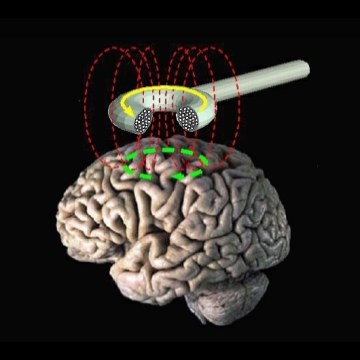Brain modulation

In addition to recording brain activity, it is also possible to stimulate the brain from outside to generate artificial neuronal activity. In TMS (transcranial magnetic stimulation), a strong, rapidly-changing magnetic field is focused on a cortical area, which causes an electric field in the tissue and drives neurons in that area to fire. With this kind of stimulation we can, for instance, cause contractions in selected muscles or alterations in perception. There are two TMS-devices in University of Jyväskylä, one in the Department of Health Sciences and the other in the Department of Biology of Physical Activity.
Transcranial direct current stimulation (tDCS) is a method by which the threshold of neuronal firing can be locally altered. tDCS does not elicit neuronal firing in itself but it can be used to modulate brain activity in a task-related brain area to, e.g., enhance learning. CIBR currently has access to three sets of tDCS equipment, at EEG recording suites in Kärki building. The same devices can be used to provide transcranial alternating current stimulation (tACS), a method to modulate brain activation in a rhythmic fashion.
Available equipment, contact Jan Wikgren for further details:
- Magstim HDCKit
- StarStim EEG/tDCS
- NeuroConn MEG compatible tDCS